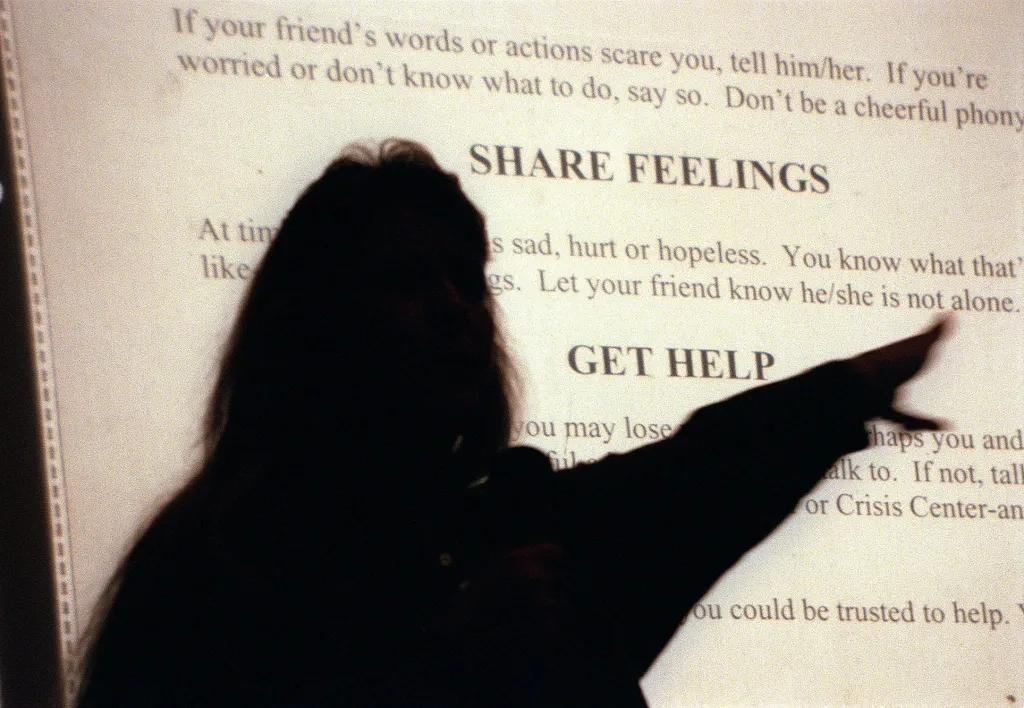
After 35 years as a clinical child and adolescent psychologist and a medical school professor, treating hundreds of children and teens who suffer from depression and suicidal thoughts and meeting with thousands of parents, I had hoped that through research, training and clinical care, I’d eventually be put out of business.
Unfortunately, that’s not the case.
Each year, millions of children, teens and young adults experience serious thoughts of death and suicide. In fact, according to the Centers for Disease Control and Prevention, suicide is now the second-leading cause of death among adolescents and young adults in our country, accounting for more deaths than all medical illnesses combined. For many groups, suicide rates have been rising during recent years.
Today, many teens and young adults feel their problems are intolerable and unsolvable and that their future is bleak. Suicide becomes a solution, an option, a source of relief. But saving the life of someone who is contemplating suicide is possible, and the goal of zero suicides is reasonable. It takes compassion, diligence and composure, along with an effective program or counseling, to be of help. Here are a few thoughts aimed at prevention.
Community- and school-based programs can be beneficial in reducing rates of completed suicide among youth. We found this with the Community Wellness Taskforce, a program developed for teens in Lake Forest and Lake Bluff. This program, which focused on screening, parent and teacher education, and development of a more supportive school culture, was put into place after there was a cluster of teen suicides in the North Shore.
The result was striking. There were no suicides during the following seven years. This success story demonstrates that prevention programs can and do work.
Sen. Sara Feigenholtz: Screening kids for mental health struggles connects intervention to prevention
Effective screening — just as we do for breast cancer among women — and evidence-based care are essential. Just like patients with cancer or heart disease, children and teenagers suffering from depression and thoughts of suicide should receive high-quality, evidence-based care from experienced clinicians. Rapid access to care is essential (unfortunately, long wait lists are a common occurrence), as is careful follow-up. Research by David Brent, a colleague at the University of Pittsburgh, found that regular follow-up contact with a clinician reduced completed suicides by 50%. This is remarkable. A simple intervention with a big impact. I do this with every patient.
Other strategies — including gatekeeper suicide prevention training, computerized adaptive testing, safety planning, machine-learning approaches to prevention and cognitive-behavioral therapy — all show promise.
Some may ask: Are we making too much of this, and won’t kids simply outgrow it? Of greater concern, might screening for depression and suicide create stigma and exacerbate risk?
The answer to these questions is a definitive no. A body of epidemiological research, dating to the 1990s, indicates that, once a child has an episode of major depression, they have a better than 70% chance of experiencing another episode of depression and are then on a trajectory toward recurrent bouts of depression during adulthood. Moreover, decades of research indicates that screening mental health concerns is not associated with an increased risk of depression or suicide among youth. Quite the opposite: Many children and adolescents feel reassured and supported when someone expresses sincere interest in their concerns and offers help.
Along the same lines, some have suggested that mental health issues are best treated with less intensive interventions and should be addressed in the family, through supportive parenting. Health Secretary Robert F. Kennedy Jr., for example, stated that schools “must return to the natural sources of mental well-being: strong families, nutrition and fitness, and hope for the future.” He continued by stating that mental health screening “medicalizes” children and can create “new stigmas that students might carry with them for life.”
To be sure, exercise, sunlight, getting a good night’s sleep, diet (including omega-3 fatty acids) and having close friendships all are associated with improved mood. And there’s much to be said for maintaining a healthy lifestyle. But basing child health care purely on sunlight and diet is misguided. Placing teens’ lives at risk when effective treatments are available is unconscionable.
In sum, the kids are not all right. Many are struggling. Research has given us the tools to make a difference.
In our schools and in the community, let’s do the right thing. If you know of a teen or young adult who is struggling, reach out, listen, offer support and encourage them to seek help. Resources are available. Suicide is a very real concern, but we — together, all of us — must know what to do and take action. Let’s step up to save a life.
If you or a loved one is experiencing mental health difficulties, help is available. Call or text 988 to reach the Suicide and Crisis Lifeline. NAMI Chicago can connect you with local resources at 833-626-4244.
Mark Reinecke is a professor emeritus of psychiatry and behavioral sciences at Northwestern University Feinberg School of Medicine.



